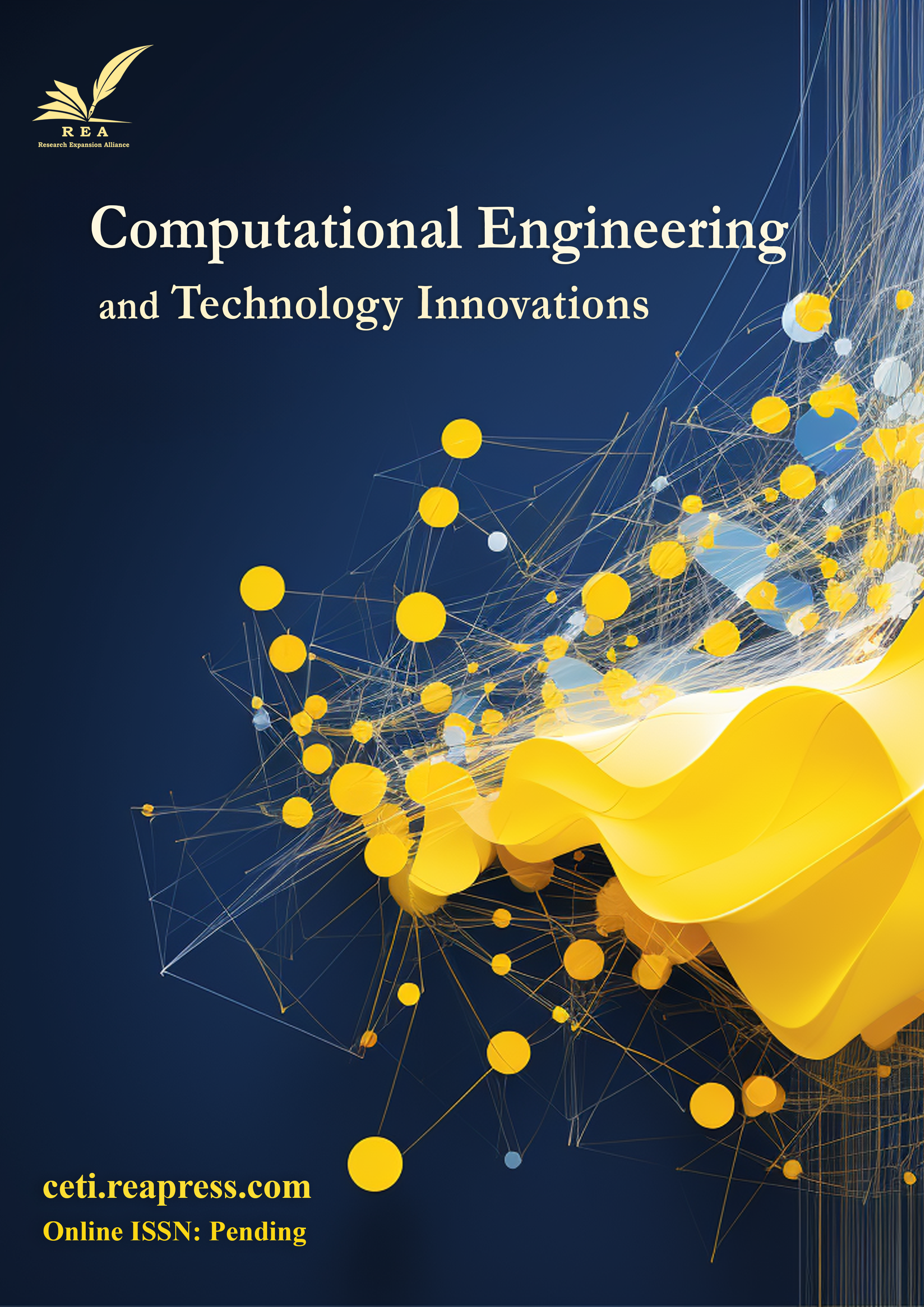Dynamic Routing In Computer Networks Using IoT Devices
Abstract
As the demand for data traffic and the complexity of contemporary computer networks grow, along with device density, dynamic routing encounters significant challenges, making traditional routing protocols inadequate in numerous situations. This paper seeks to create more responsive and efficient routing systems by integrating Internet of Things (IoT) devices into the network infrastructure. Our research illustrates how IoT devices, with their capabilities for real-time monitoring, data collection, and distributed processing, can transform inflexible routing methods into adaptive systems that respond to context in real time. In the subsequent section, we conduct a thorough evaluation of recent implementations, which reveal considerable performance improvements through IoT-based routing. Key outcomes indicate that anomaly detection can be up to 40% quicker than in traditional monitoring systems and that latency can be reduced by 25% in densely populated urban areas. We outline a new hierarchical architecture that consists of four layers: perception, network, processing, and application, which allows for the smooth integration of IoT devices while ensuring scalability and reliability. The study explores essential issues that IoT-based routing systems present, including resource limitations, security risks, and energy efficiency challenges. Therefore, there is a significant need for optimized solutions that can address these concerns and deliver innovative answers by merging machine learning algorithms with IoT-enhanced routing protocols, achieving a 45% reduction in network overhead and a 30% increase in packet delivery ratios. These findings advocate for further advancement through the promotion of standardization and collaboration across industries. Our results contribute to the evolving field of network routing by offering a concrete framework for implementing more adaptive, efficient, and resilient routing solutions. This research serves as a strong basis for next-generation networking solutions capable of accommodating the rising demands of contemporary network environments.
Keywords:
Dynamic routing, Internet of Things , Computer networks, Network optimization, Hybrid protocolsReferences
- [1] Karunkuzhali, D., Meenakshi, B., & Lingam, K. (2024). A QoS-aware routing approach for Internet of Things-enabled wireless sensor networks in smart cities. Multimedia tools and applications, 1–27. https://doi.org/10.1007/s11042-024-18125-y
- [2] Lai, R., Zhang, B., Gong, G., Yuan, H., Yang, J., Zhang, J., & Zhou, M. (2024). Energy-efficient scheduling in UAV-assisted hierarchical wireless sensor networks. IEEE internet of things journal. https://doi.org/10.1109/JIOT.2024.3369722
- [3] Barnwal, S. K., & Prakash, A. (2024). Comparative analysis of LEACH network routing protocol in wireless sensor networks: A survey. Wireless personal communications, 135(2), 697–726. https://doi.org/10.1007/s11277-024-11049-8
- [4] Najm, I. A., Hamoud, A. K., Lloret, J., & Bosch, I. (2019). Machine learning prediction approach to enhance congestion control in 5G IoT environment. Electronics, 8(6), 607. https://doi.org/10.3390/electronics8060607
- [5] Köhler, S., & Binzenhöfer, A. (2003). MPLS traffic engineering in OSPF networks—a combined approach. In Teletraffic science and engineering (Vol. 5, pp. 21–30). Elsevier. https://doi.org/10.1016/S1388-3437(03)80147-6
- [6] Yadav, R., & Kumar, V. (2024). A Systematic Review Paper on Energy-Efficient Routing Protocols in Internet of Things. IETE journal of research, 70(5), 4721–4743. https://www.tandfonline.com/doi/abs/10.1080/03772063.2023.2230169
- [7] Verma, S. (2022). Energy-efficient routing paradigm for resource-constrained Internet of Things-based cognitive smart city. Expert systems, 39(5), e12905. https://doi.org/10.1111/exsy.12905
- [8] El-Mougy, A., Al-Shiab, I., & Ibnkahla, M. (2019). Scalable personalized IoT networks. Proceedings of the ieee, 107(4), 695–710. https://doi.org/10.1109/JPROC.2019.2894515
- [9] Abdulghani, R. M., Alrehili, M. M., Almuhanna, A. A., & Alhazmi, O. H. (2020). Vulnerabilities and security issues in IoT protocols. 2020 First international conference of smart systems and emerging technologies (SMARTTECH) (pp. 7-12). IEEE. https://doi.org/10.1109/SMART-TECH49988.2020.00020
- [10] Kasturi, S. B., Reddy, P. V., VenkataNagendra, K., Madhavi, M. R., & Jha, S. K. (2022). An improved energy efficient solution for routing in IoT. Journal of pharmaceutical negative results, 13(6), 1683–1691. https://www.academia.edu/download/109280495/jpnr-2022-S06-221__281683-1691_29.pdf_filename_UTF-8jpnr-2022-S06-221__281683-1691_29.pdf
- [11] Tang, F., Mao, B., Kato, N., & Gui, G. (2021). Comprehensive survey on machine learning in vehicular network: Technology, applications and challenges. IEEE communications surveys & tutorials, 23(3), 2027–2057. https://doi.org/10.1109/COMST.2021.3089688
- [12] Bekal, P., Kumar, P., Mane, P. R., & Prabhu, G. (2024). A comprehensive review of energy efficient routing protocols for query driven wireless sensor networks. F1000Research, 12, 644. https://doi.org/10.12688/f1000research.133874.3
- [13] Mohapatra, H., & Rath, A. K. (2020). Survey on fault tolerance-based clustering evolution in WSN. IET networks, 9(4), 145–155. https://doi.org/10.1049/iet-net.2019.0155
- [14] Mohapatra, H., & Rath, A. K. (2019). Detection and avoidance of water loss through municipality taps in India by using smart taps and ICT. IET wireless sensor systems, 9(6), 447–457. https://doi.org/10.1049/iet-wss.2019.0081
- [15] Kamel, H., & Abed, A. A. (2024). Blockchain-enhanced secure routing protocols for vehicular ad hoc networks: a comprehensive review. 2024 IEEE 7th International Conference on Automation, Electronics and Electrical Engineering (AUTEEE) (pp. 624-630). IEEE. https://doi.org/10.1109/AUTEEE62881.2024.10869679
- [16] Al-Janabi, T. A., & Al-Raweshidy, H. S. (2018). A centralized routing protocol with a scheduled mobile sink-based AI for large scale I-IoT. IEEE sensors journal, 18(24), 10248–10261. https://doi.org/10.1109/JSEN.2018.2873681
- [17] Raj, J. S., Basar, A., & others. (2019). QoS optimization of energy efficient routing in IoT wireless sensor networks. Journal of ismac, 1(01), 12–23. https://www.academia.edu/download/76164096/02.pdf
- [18] Natarajan, Y., Srihari, K., Dhiman, G., Chandragandhi, S., Gheisari, M., Liu, Y., … Alharbi, H. F. (2022). An IoT and machine learning-based routing protocol for reconfigurable engineering application. IET communications, 16(5), 464–475. https://doi.org/10.1049/cmu2.12266
- [19] Esenogho, E., Djouani, K., & Kurien, A. M. (2022). Integrating artificial intelligence Internet of Things and 5G for next-generation smartgrid: A survey of trends challenges and prospect. Ieee access, 10, 4794–4831. https://doi.org/10.1109/ACCESS.2022.3140595
- [20] Shafique, K., Khawaja, B. A., Sabir, F., Qazi, S., & Mustaqim, M. (2020). Internet of things (IoT) for next-generation smart systems: A review of current challenges, future trends and prospects for emerging 5G-IoT scenarios. IEEE access, 8, 23022–23040. https://doi.org/10.1109/ACCESS.2020.2970118


